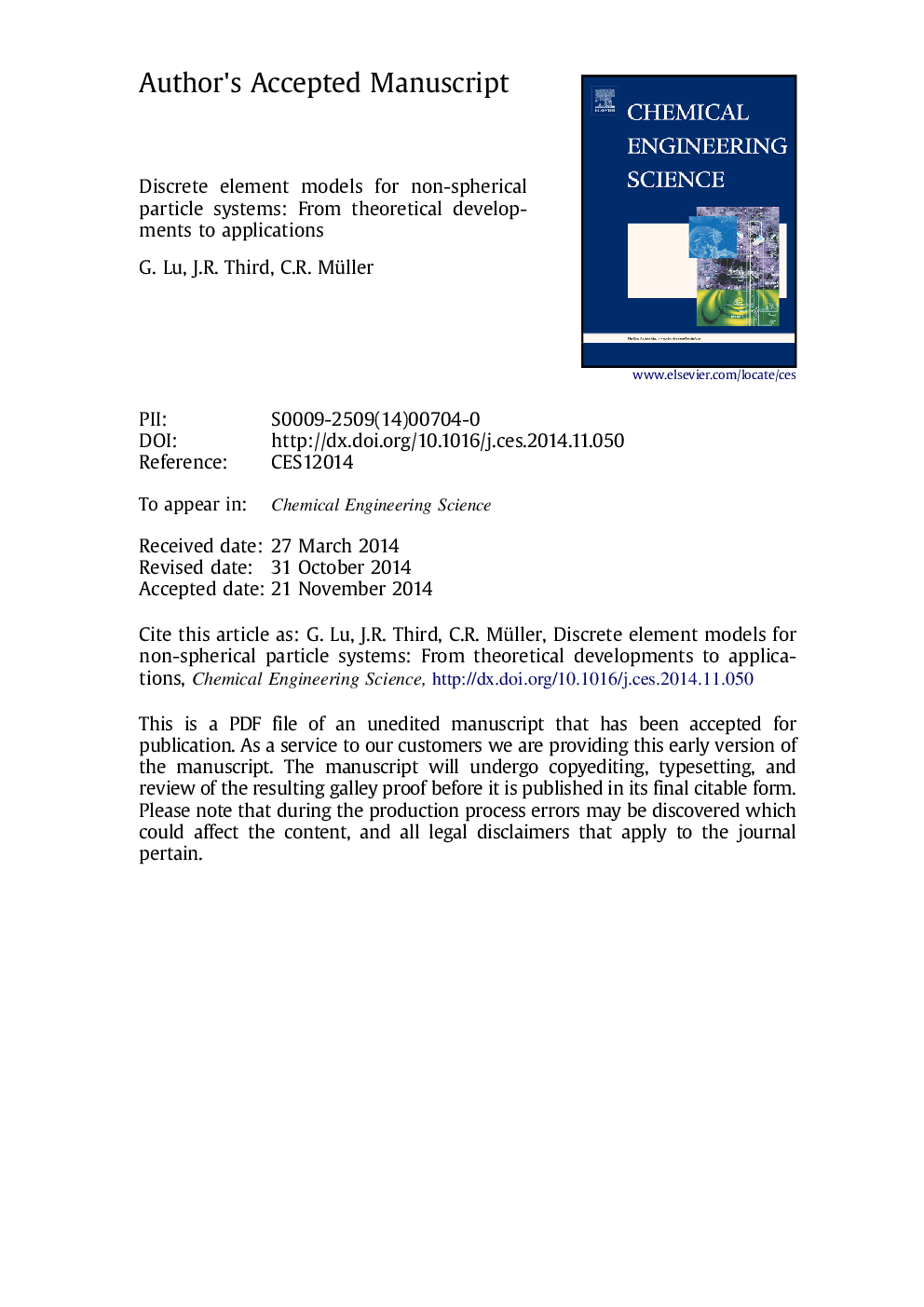| Article ID | Journal | Published Year | Pages | File Type |
|---|---|---|---|---|
| 6590111 | Chemical Engineering Science | 2015 | 117 Pages |
Abstract
A fundamental understanding of the underlying physics of granular (particulate) systems is not only of academic interest, but is also highly relevant for industrial applications. Nowadays computational techniques, e.g. the discrete element method (DEM), are frequently applied as a tool to probe the behaviour of granular systems. The DEM is a particularly attractive modelling technique since it can provide both macroscopic and microscopic 'measurements' in granular systems and allows particles of non-spherical shape to be modelled. This ability is important since there is a common understanding that particle shape has a strong influence on the dynamics of these systems. Here, we critically review recent developments in DEM to model particles of non-spherical shape. The first section of the review is concerned with advances in the formulation and implementation of non-spherical particle models, including shape representation, algorithms for the efficient detection of contacts and the determination of contact parameters. In the second part, we review the main findings obtained from numerical 'measurements' in granular systems containing non-spherical particles using the DEM. The systems covered in this review include the packing of particles, particle flow (e.g. plane shear flow, the discharge of particles from hoppers and particle motion in vibrated beds and rotating cylinders) and two-phase particle flows such as gas-solid fluidized beds and pneumatic conveying. We conclude with an outlook highlighting the future research needed to further advance this promising modelling technique.
Keywords
Related Topics
Physical Sciences and Engineering
Chemical Engineering
Chemical Engineering (General)
Authors
G. Lu, J.R. Third, C.R. Müller,
